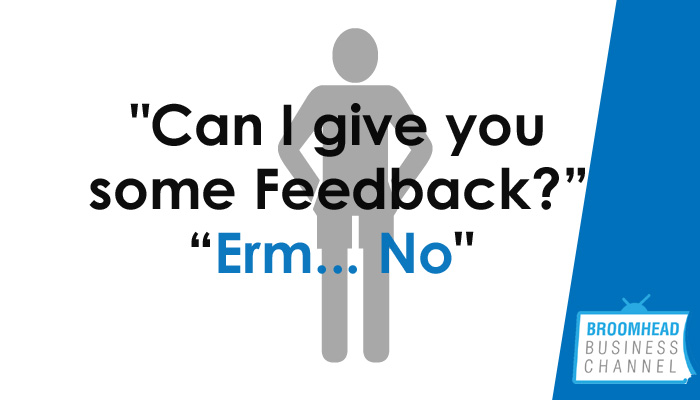 Have you ever had a time when someone has come up to you and said I want to give you some feedback? How did you feel about it? Was it an enhancing experience or something else?
Have you ever had a time when someone has come up to you and said I want to give you some feedback? How did you feel about it? Was it an enhancing experience or something else?
When most people think about Feedback particularly in a work context, they tend to immediately think about so called “negative” feedback. But when feedback is delivered appropriately it is in the interests of developing the individual to be even better, so ideally there should not be “negative” or “positive” feedback. It is just feedback.
Part of the problem is that few of us have ever been guided on how to give feedback. As with most things in business it is a skill and therefore the more we practice the better we will become. So let’s explore some crucial elements of giving feedback.
How to give feedback
1) Agreement
Firstly, if an agreement has been made beforehand that in a certain context we will be giving feedback then it goes much smoother. The agreement will vary depending on the context and relationship with the person. It could be verbal, informal, or more formal and written down.
Below are three examples of how we could get verbal agreement to give feedback in a variety of scenarios:
• “During this coaching session is it ok if I provide feedback on observations I note while we are talking?”
• “As your manager, if I notice your interactions with your team then would it be ok if I provide feedback on what I see?”
• “At the end of your public speaking presentation two members of the group will provide feedback on your content, overall body language and interaction with the audience. Are you happy for that to be done?”
2) How does the person feel?
Secondly, before we do anything else, checking how the person feels and ensuring they are in the right state to be receptive to your feedback is important. However obvious this may seem, checking beforehand will make the conversation considerable more productive.
So let us take a quick moment to consider what are ideal mental states for us to be in when receiving feedback? Here are a few suggestions:
Open to learning; listening; curious; non-judgmental; having awareness and being fully awake; self-confident: ok with oneself.
3) How do you feel?
As important as the recipient being in the “right” state, it is crucial for the person giving feedback to be in “the right state” as opposed to “a right state”. If our attitude is that we will give them a piece of our mind and think that is feedback, then we are mistaken. A rant is definitely not feedback in any definition.
So as we are developing ourselves as leaders and people of positive influence, then what are some mental states that you find useful when giving feedback? Here are a few suggestions to consider:
Non-judgmental; having awareness and being fully awake; self-confident: ok with oneself; concerned for another’s well-being; an attitude that everyone has the resources inside them.
4) Constructive
The content of the feedback should be constructive and less about opinion. It is helpful to ask ourselves “Will my suggestions enhance my relationship with this individual and help them develop in the role that the feedback relates to?”
5) Sensory Specific
Stating what you specifically saw, heard and how you let that make you feel is essential. A lot of us find this difficult. Partly because we can be vague in our language and partly because that as we live in our heads we automatically assume other people know what we are thinking. In addition, we usually have some emotion invested in the experience, so to reduce that and talk about the specific event and not other previous experiences can be hard.
6) Personal control
In the context that the feedback is observed, does the individual have the personal control to make a change using their own behaviour and thinking? Unless the behaviour is within their control then there is little they can do constructively with the feedback. Sometimes the so called “feedback” will be more general and refer to other people involved, but someone else’s behaviour is not the recipient’s responsibility to change.
7) Timely
The sooner the feedback can be given after the “event” the more effective it is. Leaving it to a later time exacerbates the interpretation of what we perceived happened. I heard that there are suggestions that for feedback to be most effective it should be given within six seconds of the behaviour for maximum learning. This doesn’t seem very practical as the person may not have even finished speaking their sentence. Giving feedback so quickly would probably break rapport. However, it is useful to know that the sooner feedback is given the better.
So there you have it, seven crucial elements of how to give effective feedback. It is not something that most people enjoy, but that is usually because they haven’t followed these seven steps. You may want to decide to print this out and make a mental note of the seven steps so you can use it with those of your team that you want to help become even better.
Matthew Broomhead
“Raising the level of Business Skills in Britain”.
Creator of Broomhead Business Channel.


